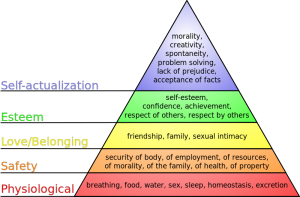Let your employee sleep. It is really that simple. Allow us to explain how it relates to your workplace.
The Japanese get to take power naps, ‘Inemuri’ if you may, during work hours – at their desks! Incredible as it sounds, this culture is even encouraged by the government, with some companies setting up internal sleep lounges for their employees. But does that go to say that their legion of salaried workers is less dedicated or less profitable to the organisation?
Not at all – au contraire, a NASA study states that a 26 minute nap can boost productivity by as much as 34% and increase alertness by 54%. Eventually these employees tend to call in sick less often, are more attentive and are less likely to quit their job. Isn’t that something you would love to have at your workplace too? We’d think the answer is a resounding yes.
So keeping these facts in mind, one of the early adopters of this corporate wellness trend was Google-USA, with its uniquely designed sleep pods for staff members. Big players that have followed Google’s lead, in this space, are:
Should your business include workplace naps too?
Giving your employees the convenience of napping at the workplace is like proving to them that you truly care about them and are willing to reward them for their tireless late-night work efforts. Thus it becomes a key element in the work-life balance equation.
Let’s now double back to the United States. A recent study by the United Nations claims that the US is one of the most overworked nations, with the average employee working more than the standard 40 hours per week. Since your employees sleep very less at night, owing to the prevalent hectic work culture, the only real solution might be to make fundamental alterations to your work environment through workplace siestas.
This trend is especially critical amongst the Millennial work-force of today, who are the most sleepless generation, with only 29 percent of those between the ages of 18 and 33 saying they regularly get sufficient sleep because they are “thinking of all the things they need to do or did not get done”.
5-6 hours of sounds sleep can help beat workplace stress and even cardiovascular diseases! So it would be safe to say that your company should consider workplace napping options, for the well-being of your people.
Employee wellness, more than just workplace siestas
Research by Gallup states that in the USA alone, depression is said to costs workplaces over $23 Billion in absenteeism. Also more than one-third (34.9% or 78.6 million) of U.S. adults are obese, according to the Centre for Disease Control and Prevention. With such nightmarish statistics out there, a small change in the attitude of managers towards workplace wellness can go a long way towards the creation of model employees, able in physical and mental capacities; who can add to the bottom line of your company.
So apart from providing relevant training modules for career growth, merit-based pay and compensating for over time; today companies across the globe, also instituting:
- Yoga sessions at work for a healthy mind and body
- Personalized work-spaces for a more friendly environment
- “Walk and talk” meetings for a healthier employees
- Interesting off-site trips for employee socializing
- Health food options for a physically healthy employee
Another strategy to enhance employee wellness is offering options that cater to specific dietary needs. Many employees follow specialized diets, some for health reasons, such as those requiring gluten-free diet plans. By providing diversified meal options, companies can support the holistic health and productivity of their workforce.
To the slightly more unconventional options such as:
- Free beer after-hours to help de-stress
- Miniature golf courses at work, to give the office a more youthful vibe
- Daycare centers at the office, for working moms
Such tactics are employed in the continuous effort to keep people fit and thus comfortably engaged within the organisation.
Take the example of the US embassy in Delhi(India) which noted the need among its employees for better air to breathe at the workplace; especially with the scare concerning high levels of air pollution in Delhi. They purchased over 1,800 indoor air purifiers to protect employees at the embassy and other locations. Such personalized employee engagement methods helps make staff members feel well-looked after and thus generate employee loyalty, which in turn increases motivation to deliver better results.
HR Analytics help you pick the perfect corporate wellness strategy
But how do companies figure out what the right mix of engagement tactics is to keep their people happy and fit? You will have your answer through a three-step process:
Step one: Accept that turn-over is an inevitable factor of doing business in the current economic scenario. People will get unhappy with your company, for various reasons, and would want to leave. Therefore the first step to understanding problems that your workforce faces – is admitting you have a problem in employee engagement.
Step two: Ask yourself how big companies like Google know what wellness tactic will resonate most with their workforce? The answer is fairly simple – research.
Find out if the bulk of your employee need more lunch-time off to form better relationships with their team-mates or just better lumbar support through ergonomic office chairs? Or perhaps working mothers are stressed out because they are not able to manage their kids easily owing to the lack of a play-area at work?
The answer to these questions, and more, are unique to each office and can be derived though the adoption of holistic HRMS (Human Resource Management System) analytics. These tools provide priceless insights into employee behavior and needs, which if harnessed effectively can build immense employee loyalty and morale within the company.
Step three: Grade the results of your employee research findings based on Maslow’s Hierarchy of Needs Theory. As an employer, you must seek to fulfill the basic bodily needs (physiological) first to really get your employees’ spirits back on track, before going ahead and addressing the next few levels of human needs.

Round-up of Employee Insight Tools
Think you are fighting an employee engagement battle at all these levels? Here are some effective HRMS ammo to keep handy:
- Network with your employees and understand what bothers them most by gaining their trust through informal interactions – Ye’ old water-cooler conversations
- Your managers can receive useful insights on work capacities of each of their reportees, in order to help balance their workload, with Workforce Planning Software.
- Get real a understanding of employee attitudes and opinions about the work environment by regularly conducting internal Employee Satisfaction Surveys
- Help your managers easily monitor the performance of their teams and ensure that the employees are on the right growth track and compensated accordingly, with the Employee goal setting & tracking module
So the next time you look for ideas, led by employee well-being, to make your office worth wanting to work at; keep your ear to the ground with some of these analytics software to base your decisions on the very pulse of your workforce.




Great insights! The way you’ve presented the information makes it easy to understand and very impactful. Keep up the great work.
Thanks for sharing this article.